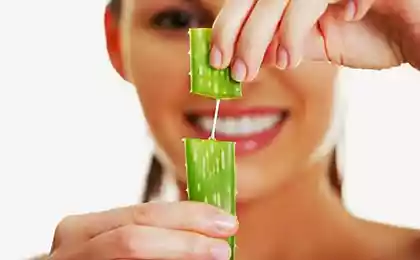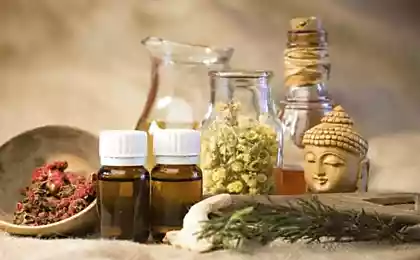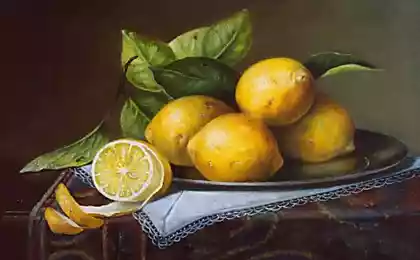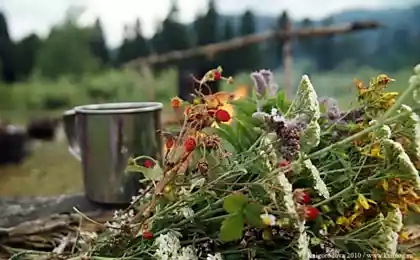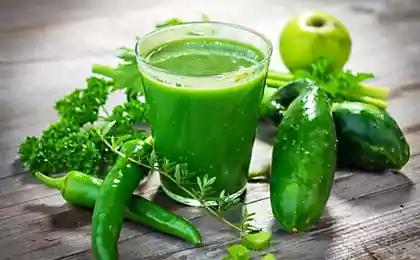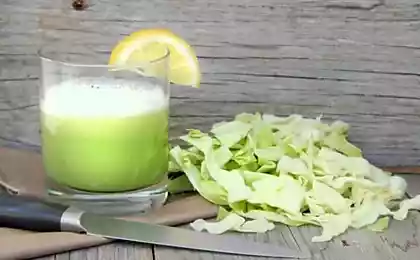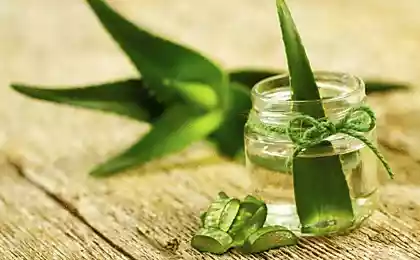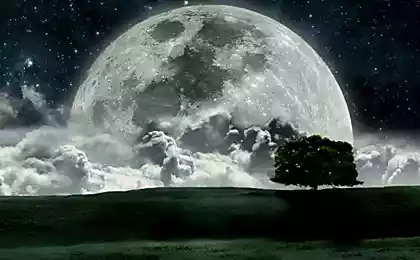141
The juice of this plant leaves burns, friends, be careful
Now, in the summer time of trips to nature and to the country, one should not forget about one very dangerous plant, which is increasingly spreading throughout the territory of Russia.

DepositPhotos
"Site" He talks about the dangers of the hogweed Sosnovsky and reminds you what you need to do to avoid becoming his victim.
Hogweed Sosnowski Borschevik is shrouded in many legends and prejudices. Whether it is grass, or a tree, or a biological weapon – some consider it a mutant, bred by scientists. In fact, it is not a mutant, but a plant from the genus Heracleum.

There are about 70 species of hogweed in nature, and there are only three of them - Persian hogweed, growing in Turkey and Iran; Mantegazzi hogweed, reaching six meters in height; and Sosnovsky hogweed, a slightly more modest plant in size, only some 3-4 meters.
There is an opinion that all hogweeds are dangerous and do not bring benefits. However, this is not the case – it all depends on the type of plant. For example, the leaves, stems and young shoots of Siberian hogweed can be eaten not only in salted and pickled, but also in raw form!

Despite the name, Siberian It is growing almost throughout Russia. It is his or similar hogweed ordinary we most often used in childhood for the manufacture of the highest quality pipe-spitting. By the word "hogweed" until the end of the 80s, everyone meant this plant.
Another group of rumors and inaccuracies is associated with the way the hogweed Sosnovsky appeared in the European part of Russia. In Soviet times, there was a rumor that this plant was specially imported from America to undermine the agriculture of the USSR.
In fact, the birthplace of almost all types of hogweed are temperate areas of the eastern hemisphere, and only mantegazzi It grows in North America. Only Sosnovsky hogweed was specially imported from the Caucasus as a highly productive silo culture.

Work on the introduction of hogweed Sosnovsky was started in 1946. This happened on the basis of the decisions of the XXXV plenum of the section of animal husbandry of the Academy of Agricultural Sciences and, as they say, on the direct instructions of Stalin himself.
Hogweed in new conditions quickly developed, gave a huge biomass, perfectly adapted to the climatic conditions of the middle band and did not require any fertilization and costs.
Since then, the victorious procession of this plant throughout the Union began. Even after the death of the leader, his work in this area was continued by other leaders of the country. In the 1970s, hogweed was cultivated in Poland and the GDR.

DepositPhotos
However, cows ate a poisonous plant with great reluctance, and often completely refused such food. And milk after such a meal became bitter to taste. As a result of these discoveries, the offended inhabitants of Poland dubbed the hogweed “Stalin’s revenge.”
The problem is that Sosnovsky’s hogweed turned out to be poisonous. Or rather, its leaves emit essential oils, which dramatically reduce the sensitivity of the skin to ultraviolet light.
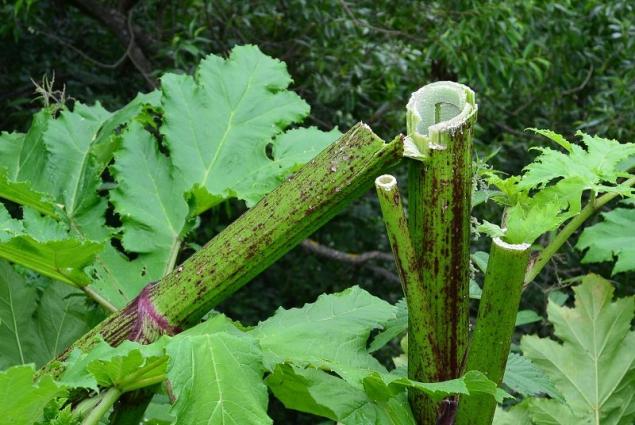
And this is a very insidious property for a person. You do not feel pain when touching the leaves, but you should go out in the sun, and the skin will show burns of the 1-3rd degree.
You can get a burn by slightly touching the plant with a wet sweaty body, and an allergic reaction is just breathing in pairs during mowing this deadly plant.
Depending on the individual susceptibility and area of the skin area on which the hogweed juice fell, burns can be different - from slight redness to large blisters, which later become deep and hard-healing wounds. If hogweed burns 80% of the body, a person can die.
In the affected areas, purulent wounds can also form. A person affected by the plant may feel general weakness and nausea, body temperature rises.

Especially toxic hogweed for young children! Therefore, parents need to show this dangerous plant to children and forbid not only to touch it, but also to come close. After contact with hogweed juice, the following measures should be taken:
How to avoid burns after contact
If the affected area is small, you will be prescribed local treatment on an outpatient basis. In this case, it is necessary to strictly follow all the recommendations of the doctor. If hospitalization is offered, don't refuse.
According to estimates of the Institute of Phytopathology, hogweed occupies more than a million hectares or about 15% of natural landscapes from the western borders of Russia to the Urals. In recent years, the hogweed has been spotted in the center of Pskov, Murmansk, in the Nizhny Novgorod Kremlin and on the roadsides of the Kaluga, Kiev and Leningrad highways in Moscow.

DepositPhotos The fight against the “burning monster” is not easy. Hands to do this will be impossible, because even a fleeting touch to the leaves can end in trouble.

Therefore, all fights with hogweed are best conducted in cool and overcast weather, in closed clothes (preferably from materials that repel moisture) and rubber gloves. We recommend getting rid of the invader in 5 steps.
Do you like to plant flowers on the windowsill? But did you know that some of them can pose a terrible danger to you or your loved ones? "Site" It will tell you about the most harmful houseplants.
Our editorial staff has prepared 9 useful tips for emergency care for sunburn. It is better to take all measures so that it does not come to this!

DepositPhotos
"Site" He talks about the dangers of the hogweed Sosnovsky and reminds you what you need to do to avoid becoming his victim.
Hogweed Sosnowski Borschevik is shrouded in many legends and prejudices. Whether it is grass, or a tree, or a biological weapon – some consider it a mutant, bred by scientists. In fact, it is not a mutant, but a plant from the genus Heracleum.

There are about 70 species of hogweed in nature, and there are only three of them - Persian hogweed, growing in Turkey and Iran; Mantegazzi hogweed, reaching six meters in height; and Sosnovsky hogweed, a slightly more modest plant in size, only some 3-4 meters.
There is an opinion that all hogweeds are dangerous and do not bring benefits. However, this is not the case – it all depends on the type of plant. For example, the leaves, stems and young shoots of Siberian hogweed can be eaten not only in salted and pickled, but also in raw form!

Despite the name, Siberian It is growing almost throughout Russia. It is his or similar hogweed ordinary we most often used in childhood for the manufacture of the highest quality pipe-spitting. By the word "hogweed" until the end of the 80s, everyone meant this plant.
Another group of rumors and inaccuracies is associated with the way the hogweed Sosnovsky appeared in the European part of Russia. In Soviet times, there was a rumor that this plant was specially imported from America to undermine the agriculture of the USSR.
In fact, the birthplace of almost all types of hogweed are temperate areas of the eastern hemisphere, and only mantegazzi It grows in North America. Only Sosnovsky hogweed was specially imported from the Caucasus as a highly productive silo culture.

Work on the introduction of hogweed Sosnovsky was started in 1946. This happened on the basis of the decisions of the XXXV plenum of the section of animal husbandry of the Academy of Agricultural Sciences and, as they say, on the direct instructions of Stalin himself.
Hogweed in new conditions quickly developed, gave a huge biomass, perfectly adapted to the climatic conditions of the middle band and did not require any fertilization and costs.
Since then, the victorious procession of this plant throughout the Union began. Even after the death of the leader, his work in this area was continued by other leaders of the country. In the 1970s, hogweed was cultivated in Poland and the GDR.

DepositPhotos
However, cows ate a poisonous plant with great reluctance, and often completely refused such food. And milk after such a meal became bitter to taste. As a result of these discoveries, the offended inhabitants of Poland dubbed the hogweed “Stalin’s revenge.”
The problem is that Sosnovsky’s hogweed turned out to be poisonous. Or rather, its leaves emit essential oils, which dramatically reduce the sensitivity of the skin to ultraviolet light.

And this is a very insidious property for a person. You do not feel pain when touching the leaves, but you should go out in the sun, and the skin will show burns of the 1-3rd degree.
You can get a burn by slightly touching the plant with a wet sweaty body, and an allergic reaction is just breathing in pairs during mowing this deadly plant.
Depending on the individual susceptibility and area of the skin area on which the hogweed juice fell, burns can be different - from slight redness to large blisters, which later become deep and hard-healing wounds. If hogweed burns 80% of the body, a person can die.
In the affected areas, purulent wounds can also form. A person affected by the plant may feel general weakness and nausea, body temperature rises.

Especially toxic hogweed for young children! Therefore, parents need to show this dangerous plant to children and forbid not only to touch it, but also to come close. After contact with hogweed juice, the following measures should be taken:
How to avoid burns after contact
- Immediately wash the affected areas of the skin with abundant running water with soap and with a soft sponge.
- Clothe these places as much as possible from direct sunlight for at least 2-3 days.
- If you get juice in the eyes, immediately wash them with water for 15-20 minutes, if you get into the mouth, rinse them.
- In case of burns, it is necessary to treat the affected areas with an antiseptic solution, dexpanthenol, apply a sterile bandage and call an ambulance.
If the affected area is small, you will be prescribed local treatment on an outpatient basis. In this case, it is necessary to strictly follow all the recommendations of the doctor. If hospitalization is offered, don't refuse.
According to estimates of the Institute of Phytopathology, hogweed occupies more than a million hectares or about 15% of natural landscapes from the western borders of Russia to the Urals. In recent years, the hogweed has been spotted in the center of Pskov, Murmansk, in the Nizhny Novgorod Kremlin and on the roadsides of the Kaluga, Kiev and Leningrad highways in Moscow.

DepositPhotos The fight against the “burning monster” is not easy. Hands to do this will be impossible, because even a fleeting touch to the leaves can end in trouble.

Therefore, all fights with hogweed are best conducted in cool and overcast weather, in closed clothes (preferably from materials that repel moisture) and rubber gloves. We recommend getting rid of the invader in 5 steps.
- Quickly dig out the seedlings.
As soon as the plants appear from the ground, cut them with a shovel at a depth of about 10 cm. Leave the tops until completely dry, then they can be sent to compost. - Spring digging
Dig or plow the problem area several times with an interval of 2 weeks, and necessarily in the spring. - Spray young plants with herbicide
Suit "Agrokiller", "Glyphos", "Liquidator", "Roundup", "Tornado" and their analogues - choose any. Reprocessing may be necessary. - Decapitation of the plant
Namely, regularly remove the umbrellas that appear on the flowering hogweed and be sure to burn them. - Put away the seeds.
Found at any time of the year umbrellas with uncreased seeds, if possible, collect and send to the fire.
Do you like to plant flowers on the windowsill? But did you know that some of them can pose a terrible danger to you or your loved ones? "Site" It will tell you about the most harmful houseplants.
Our editorial staff has prepared 9 useful tips for emergency care for sunburn. It is better to take all measures so that it does not come to this!
This is what one handful of raw peanuts a day can do: a month in this mode will create a miracle.
How to tell if a loved one is starving or secretly eating

